Elem Klimov’s Come and See (1985): Criterion Blu-ray review
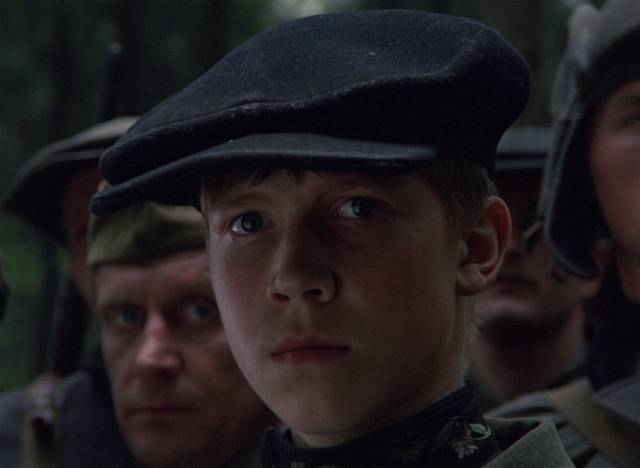
It’s well known that people who have been to war often find it impossible to talk about their experience to those who haven’t. There is no common ground. Those of us who have never experienced war personally only have access through various mediated channels – most immediately, news media; at a distance through memoirs, history texts; and most prolifically, through fiction and movies. All these filters put us at a distance from the experience itself. War becomes a narrative, it takes on form and meaning, events assume a purpose, a theme, a moral lesson … but we can never actually know the raw experience, the mixture of tedium and horror, the physical and mental stresses. For non-participants, war becomes an intellectual exercise, even a form of entertainment – vicarious adventure, fear, courage … stripped of its actual danger, we imagine we understand but in the end we remain safe and untouched.
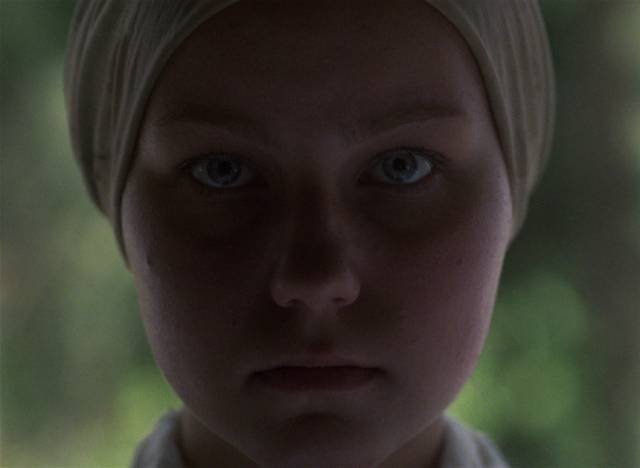
This is why even anti-war films are problematic; the visceral depiction of horrors remains to some degree exhilarating. Safe in our seats we feel primal excitement even when we recognize the need to condemn. In large part this is because the absence of actual fear, pain and horror allows us to imagine that we ourselves can experience these things and yet remain untouched; as viewers, we position ourselves as survivors – we can pity those who suffer and perish, but we will always return unscathed. And that fantasy of survival paradoxically makes the experience of vicarious war enticing. (It’s similar to the way we interact with disaster movies, knowing that we ourselves, no matter how bad things get, would definitely be among the survivors; these movies wouldn’t be fun if we didn’t have that safety valve.)
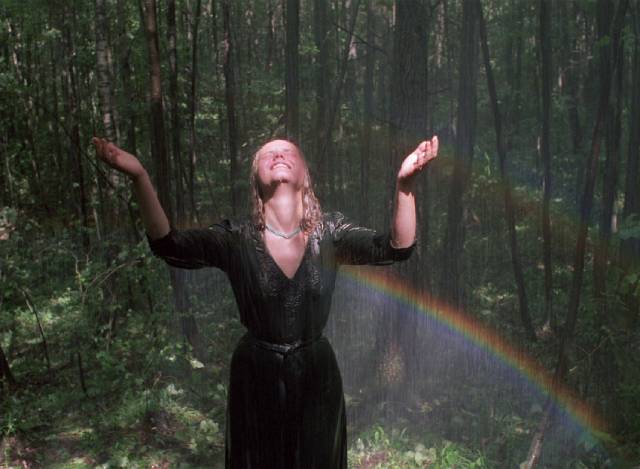
For these reasons it seems rare that a filmmaker is able to make a movie which is genuinely unsettling, which leaves the viewer without that sense of safety and satisfaction. How they do this, how they manage to avoid both gung-ho heroics and existential poetry, is one of those alchemical mysteries of art. This is what makes a film like Elem Klimov’s Come and See (1985) such a haunting rarity. Rooted in the horrors experienced by the ordinary people of Belarus under German occupation, the film uses a style which is both hallucinatory and firmly grounded in a visceral attention to physical detail. Klimov permits us no distance from the characters’ experience of hardship and horror. Gruelling and often unpleasant, the film refuses to provide us with intellectual distance; we are claustrophobically tied to the perceptions of a single mind being driven mad by experiences so unbearable that they preclude the enjoyable frisson we usually get from vicarious horror.
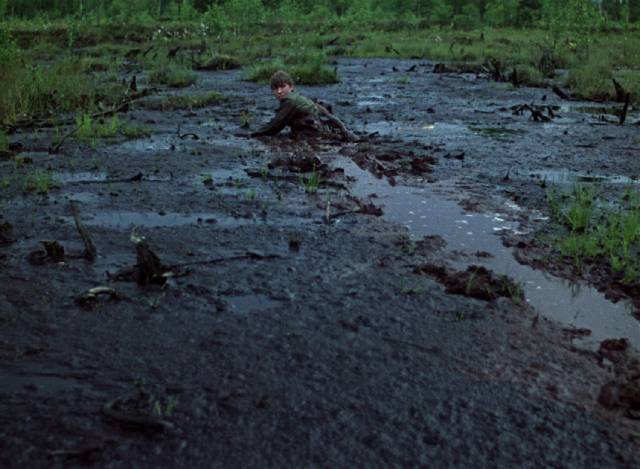
We see a bucolic world – rolling agricultural landscapes dotted with small villages where peasant families toil in mutual efforts to survive – turned upside down by the intrusion of outside forces which view this culture as something pathetic and disgusting, with no right to exist. From the opening shot, a closeup of the back of an old man’s head as he yells at someone unseen, we are disoriented. Even when we finally realize that the old man is yelling at a couple of boys, we can’t discern the meaning of the scene. Once he’s gone, the boys emerge and begin digging in sand, pulling out scraps of metal. The younger boy mockingly imitates the old man by ranting in a harsh voice. A plane flies overhead. Finally the slightly older boy finds something in the sand and strenuously pries it loose – a rifle.
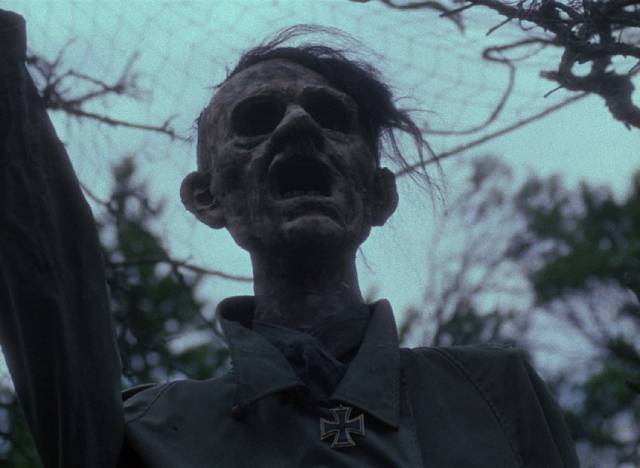
It only becomes clear much later why the old man was agitated: the boys’ search for weapons poses a threat to the whole village because it would give the invading Germans an excuse to punish the community for “partisan activity”. To the boys, however, the idea of being armed, of fighting, represents excitement and adventure.
The older boy, Flyora (Alexei Kravchenko), returns home with the gun, determined to join the partisans. His despairing mother begs him not to go; when he seems unmoved by her pleas, she drags his younger twin sisters from bed and insists that he kill them all because leaving them will mean their death anyway. (Her fears prove valid, though not exactly in the way she means.)
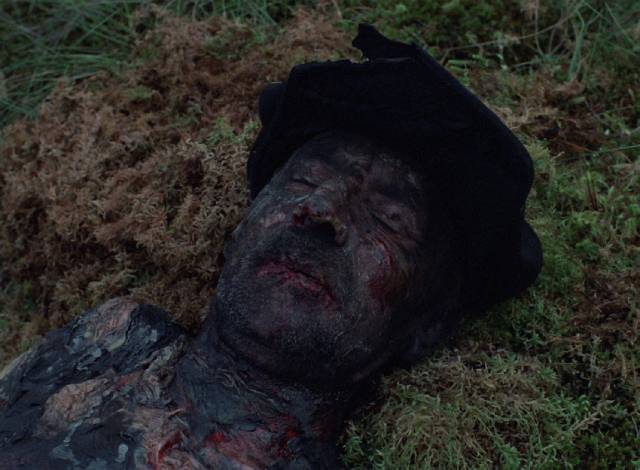
With this scene unresolved, a pair of partisans arrive. The bigger of the two cheerfully teases the twin girls, but it becomes clear that they’re here to take Flyora away. Despite his apparent desire to go with them, they treat him roughly … instantly the boy’s fantasy falls under a shadow. He’s not going to be anything special, just another body to throw into the fight. But when the partisans are ready to move out of their forest camp on a mission, Flyora is ordered to give his boots to an older man and remain behind. This is devastating to him, being treated suddenly as a child, not yet a soldier.
Also left in the camp is a slightly older girl, Glasha (Olga Mironova), also unhappy at being left behind because she apparently loves the partisan commander. Together in the woods, Flora and Glasha form a bond – both become for a while the children that they are, playing, teasing, dancing in the rain … a brief moment of enjoyment with the War forgotten. That is, until planes fly overhead, paratroops are seen drifting down, and bombs suddenly start falling around them, shattering trees, destroying the makeshift camp buildings. The two children are suddenly alone, immersed in dangers they can’t fully grasp. Sound itself is suppressed and we can only hear things muffled beneath the loud ringing in Flyora’s ears caused by the explosions.
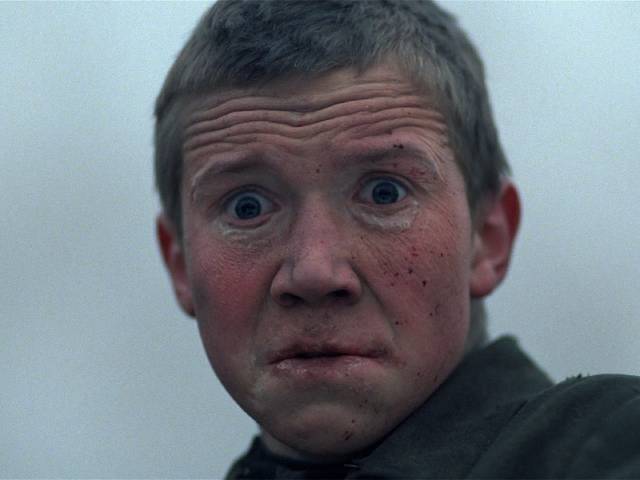
And so Flyora leads Glasha back to his village, which seems eerily empty. Thinking he knows where everyone has gone to hide, Flyora rushes off down a mud track. Only Glasha glances back to see the villagers, including his own family, piled together against the wall of the house. This is just one moment in which Klimov doesn’t dwell on something momentous because it’s outside Flyora’s awareness; the boy remains focused on what’s immediately before him, what needs to be dealt with right now … like making his way through the thick mud of a bog to a small island where he’s certain the villagers are hiding. Glasha drags herself after him and when they reach the shore and no one is in sight, she tells him they’re all dead … but he refuses to absorb the idea until someone comes along and he’s led to the surviving villagers where the old man from the opening scene confirms what the girl has said. The old man himself is hideously burned, having been doused in gasoline and set on fire for the amusement of enemy soldiers…
And so the film progresses, with a child’s mind trying to make something comprehensible out of a world which grows increasingly brutal and extreme. Without reference points, the horrors Flyora experiences can’t be assimilated; nothing makes sense and his only viable responses are numbness and madness. But even those are inadequate because the horrors keep coming as he wanders what has become an unfamiliar, alien landscape. Nowhere is safe. Found by a farmer who takes him to another village, telling him to remember an endless list of names so that he can pretend to be part of the man’s family, Flyora is the only one who realizes what is about to happen when a German unit arrives and starts gathering everyone together. He tries to warn them, to get them to resist, but the population comply with the orders hoping not to aggravate the Germans.
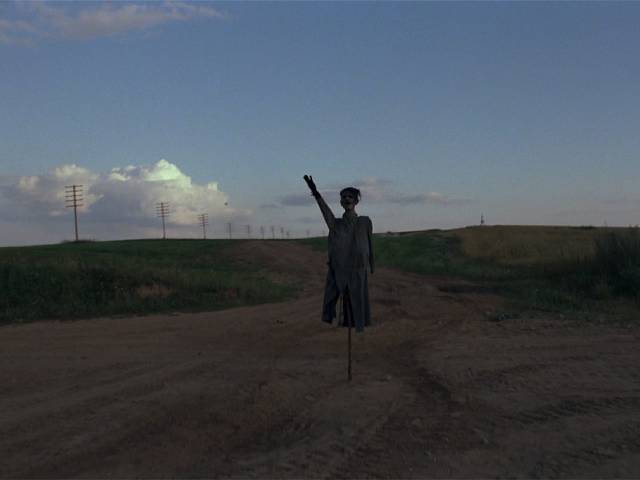
The lengthy climactic sequence is unbearable. Klimov depicts the atrocity with almost chilling detachment, forcing us to view it through Flyora’s eyes, through the eyes of a child confronting absolute horror, surrounded by soldiers who perceive their own monstrous acts as a form of entertainment. There is no human connection here, just the viciousness of organized killers and the abject confusion of their victims. Flyora is one of only a handful spared the massacre, left alive because his fear and madness amuse his tormentors. The film has reached a point where the idea of war is so untenable, what it does to anyone who is caught up in it so appalling that it has become impossible for a viewer to grasp or make sense of.
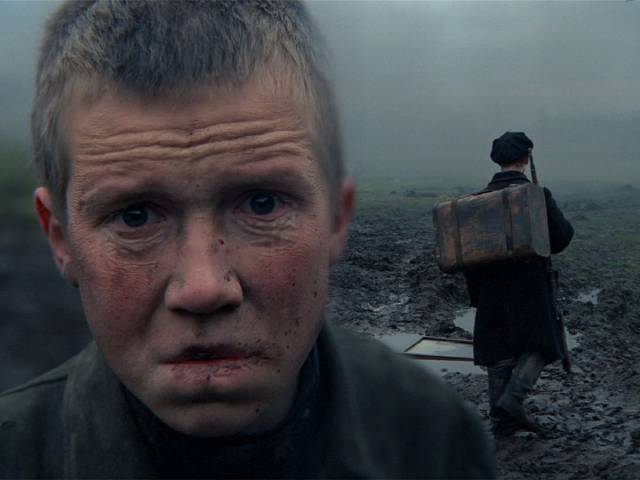
This is also the point at which our own basic feelings run into the limits of what an anti-war film is capable of achieving: what we have seen fills us with anger and hatred towards the perpetrators of unspeakable atrocities. We know that what we have seen makes war unacceptable … and yet all we want is revenge, to see these human monsters suffer in turn. Klimov has made us aware of the flaw in ourselves which perpetuates what we know is unacceptable.
How to resolve this paradox? In the final sequence, Flyora comes across his old partisan unit, now holding a number of Germans (and Ukrainian collaborators) prisoner after a fight. Among them are those who ordered and led the massacre of the village. Stripped of their group power, they are exposed as pathetic individuals, begging for their lives, making excuses, taking no responsibility. Now they inspire disgust rather than anger and when they are shot there’s no righteous satisfaction, just more pointless waste.
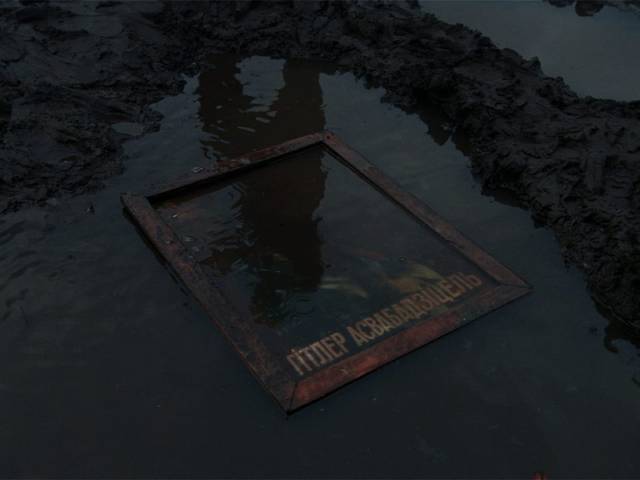
Here, Klimov abruptly breaks with the style he has used throughout the film – what you might call hallucinatory realism – and it becomes abstract; as the partisans begin to march away to continue the campaign, Flyora sees a portrait of Hitler lying in a muddy puddle and takes aim at it. As he repeatedly fires his rifle into the image, Klimov intercuts a montage of documentary footage … but this runs backwards from images of the Holocaust, through cities reconstituting themselves from ruins, and on until the sequence ends with the famous photograph of Hitler as a baby on his mother’s lap. To be honest, I’m not entirely sure how to interpret all this. Does it reiterate on a larger historical scale Flyora’s own progression from innocent child to someone so traumatized that he is now capable of monstrous acts? Klimov had wanted to call the film Kill Hitler, referring not specifically to a desire to assassinate the Fuhrer (the simplistic fantasy of Tarantino’s Inglourious Basterds [2009]), but rather to the need to eliminate our own innate capacity to do terrible things … but I don’t think I would have understood this montage in those terms without him having explained it in interviews.
*
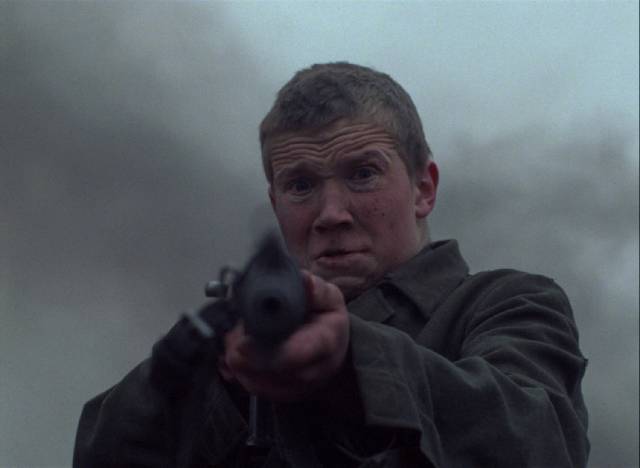
Few films can match Come and See’s ability to instill a feeling of madness in a viewer. It’s a deeply disturbing film, and yet in retrospect it seems surprisingly ungraphic; because Klimov has managed to get so deeply inside the viewer’s head, he doesn’t actually need to show blood and gore … and yet we experience the full horror of the burning village. This is of course due to his masterful control of style – he repeatedly presents us with centred closeups of characters looking directly at us, their eyes holding our attention, forcing us to register their thoughts and emotions. This visual technique gives us step-by-step access to Flyora’s gradual descent into madness.
But ultimately, what makes this work is the presence of Alexei Kravchenko as Flyora. Fifteen at the time of filming, Kravchenko had no acting experience. He approaches the part with no developed skills and techniques; his embodiment of the character is so complete that those closeups revealing his terror and madness fill you with dread. In Come and See, we watch the destruction of a boy’s mind (Klimov says his biggest fear in making the film was for Kravchenko’s sanity). It’s this single, personal thread which pulls the film together through its series of episodes and vignettes.
*
Scripted by Klimov with writer Ales Adamovich, Come and See is based on actual events. The Germans burnt more than 600 villages along with their inhabitants (more than 80,000 people) during their occupation of Belarus; one quarter of the population was killed … yet one more Nazi-directed genocide. With few if any left untouched, the scars were still deep when Klimov made the film and what resulted was deeply informed by the national trauma.
*
The disk
Criterion’s Blu-ray presents the film in a stunning 2K restoration from Mosfilm. With fine detail and authentic film grain, the image is a huge advance over the old RusCiCo DVD released by Kino in 2001. Aleksey Rodionov’s cinematography is often breathtaking, with frequent use of Steadicam in long takes which give a sense of solidity to the world being depicted.
The supplements
There are more than two hours of archival and new features on the disk, covering the making of the film and the historical background. There are three interviews from 2001: Elem Klimov (20:46), Alexei Kravchenko (13:07) and production designer Viktor Petrov (7:44). A brief promo film from 1985 (10:25) contains interview clips and some behind-the-scenes footage.
New material produced by Criterion includes an introduction by cinematographer Roger Deakins focused on Rodionov’s work (10:00) and an interview with German Klimov, the director’s brother (26:40).
There are also three documentary shorts by filmmaker Viktor Dashuk from 1975 in which survivors of the burned villages relate their experiences – Handful of Sand (10:02), Mute Scream (10:47) and Woman from the Killed Village (28:35).
A rerelease trailer is included (1:53), and the booklet contains two essays, one on the film by Mark Le Fanu and one on writer Ales Adamovich by poet Valzhyna Mort.
Comments